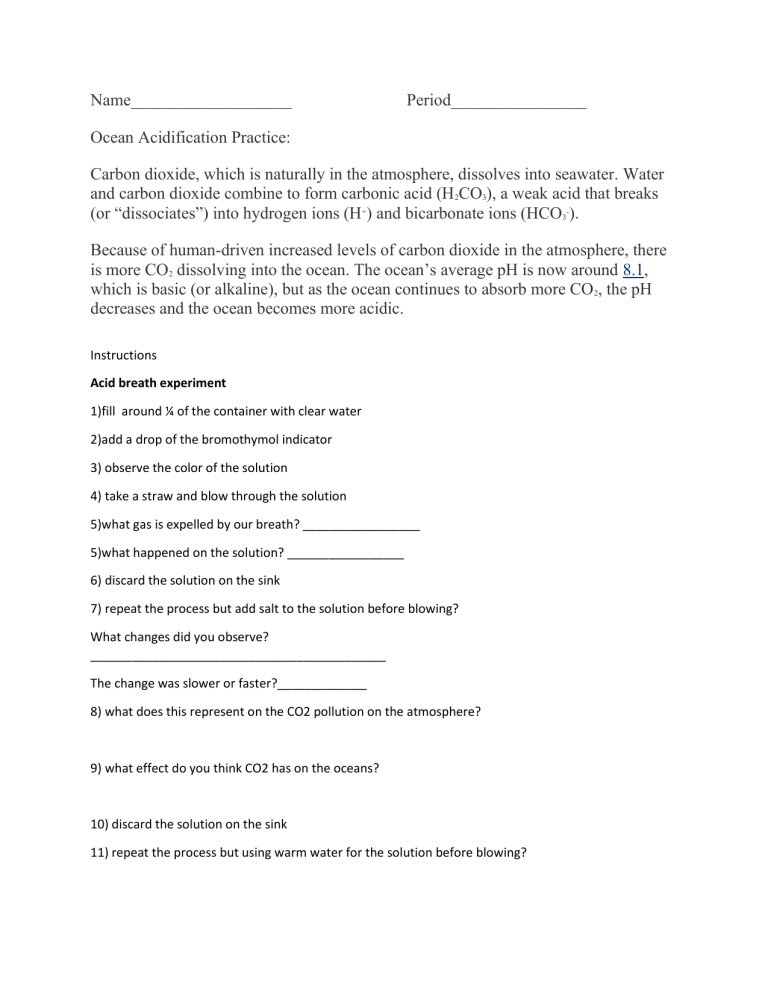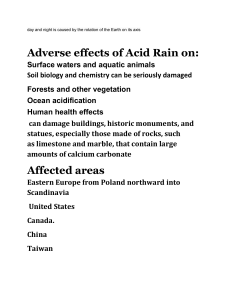
Name___________________ Period________________ Ocean Acidification Practice: Carbon dioxide, which is naturally in the atmosphere, dissolves into seawater. Water and carbon dioxide combine to form carbonic acid (H2CO3), a weak acid that breaks (or “dissociates”) into hydrogen ions (H+) and bicarbonate ions (HCO3-). Because of human-driven increased levels of carbon dioxide in the atmosphere, there is more CO2 dissolving into the ocean. The ocean’s average pH is now around 8.1, which is basic (or alkaline), but as the ocean continues to absorb more CO 2, the pH decreases and the ocean becomes more acidic. Instructions Acid breath experiment 1)fill around ¼ of the container with clear water 2)add a drop of the bromothymol indicator 3) observe the color of the solution 4) take a straw and blow through the solution 5)what gas is expelled by our breath? _________________ 5)what happened on the solution? _________________ 6) discard the solution on the sink 7) repeat the process but add salt to the solution before blowing? What changes did you observe? ___________________________________________ The change was slower or faster?_____________ 8) what does this represent on the CO2 pollution on the atmosphere? 9) what effect do you think CO2 has on the oceans? 10) discard the solution on the sink 11) repeat the process but using warm water for the solution before blowing? What changes did you observe? ___________________________________________ The change was slower or faster?_____________ Explanation: Corals and fish can be affected by slight changes in the temperature of the water and the next experiment also shows the effect of temperature increase on CO2 absorption, creating a positive feedback, a knock-on effect. Eggshell experiment Corals and shellfish can be affected by ocean acidification, making it harder to create their shells, which will affect other fish up through the food web. Instructions: 1) Take a sample of eggshell (this will be an imitation of seashells) 2) Rinse it with the vinegar solution (low acidic ocean) 3) Observe what happens Is it firmer or more brittle?_________________________ 4) Place it on the vinegar solution (high acidic ocean) 5) Observe that happens What happened after you placed the eggshell? What difference made from just rinsing it? What happened after you stirred the solution with the eggshell? What do you think happens to seashells on the ocean as it becomes more acidic?



